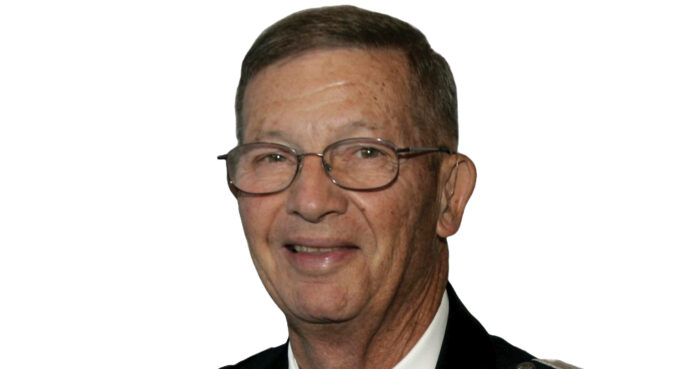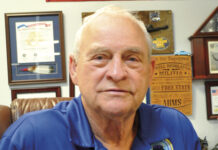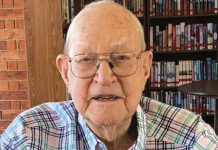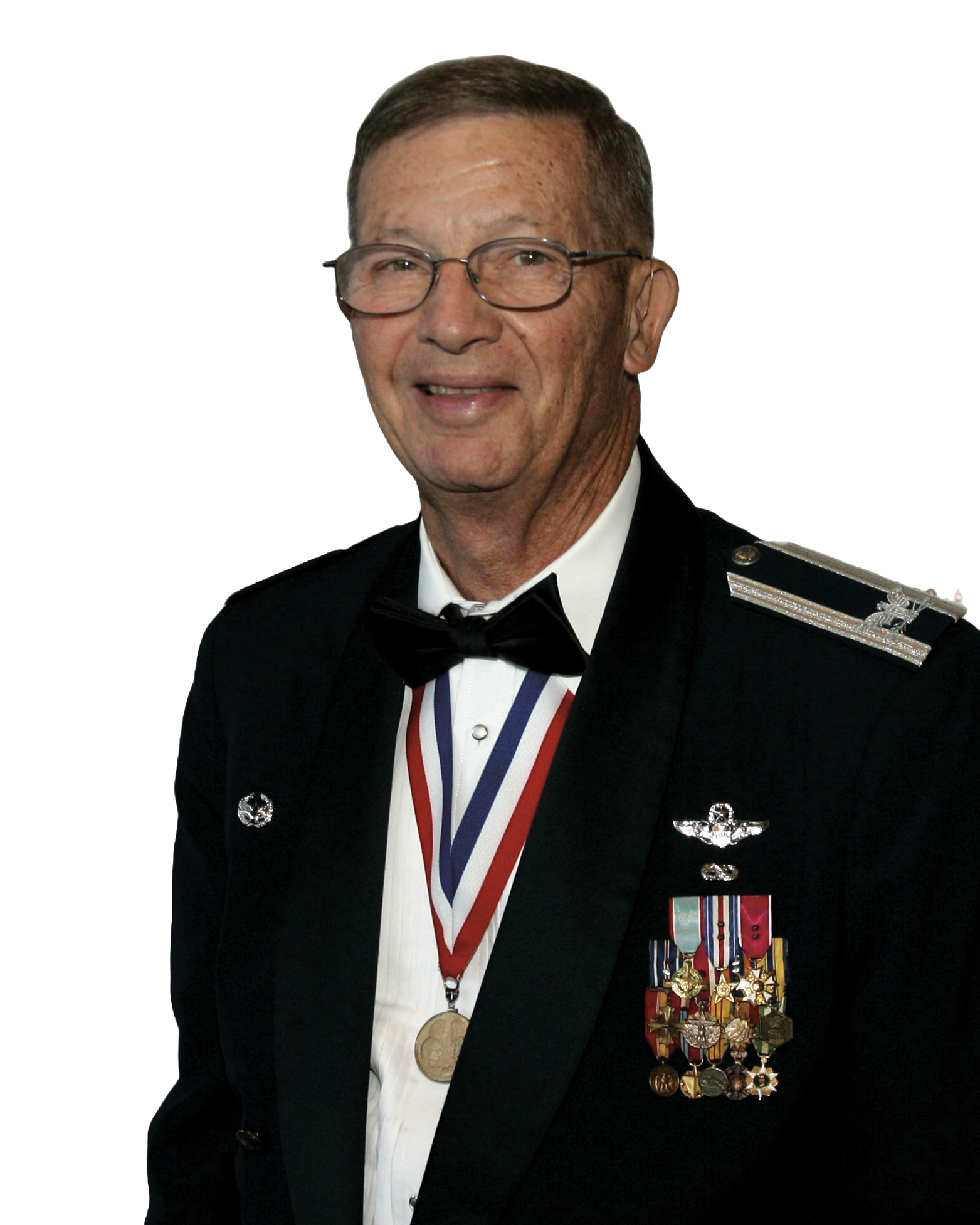
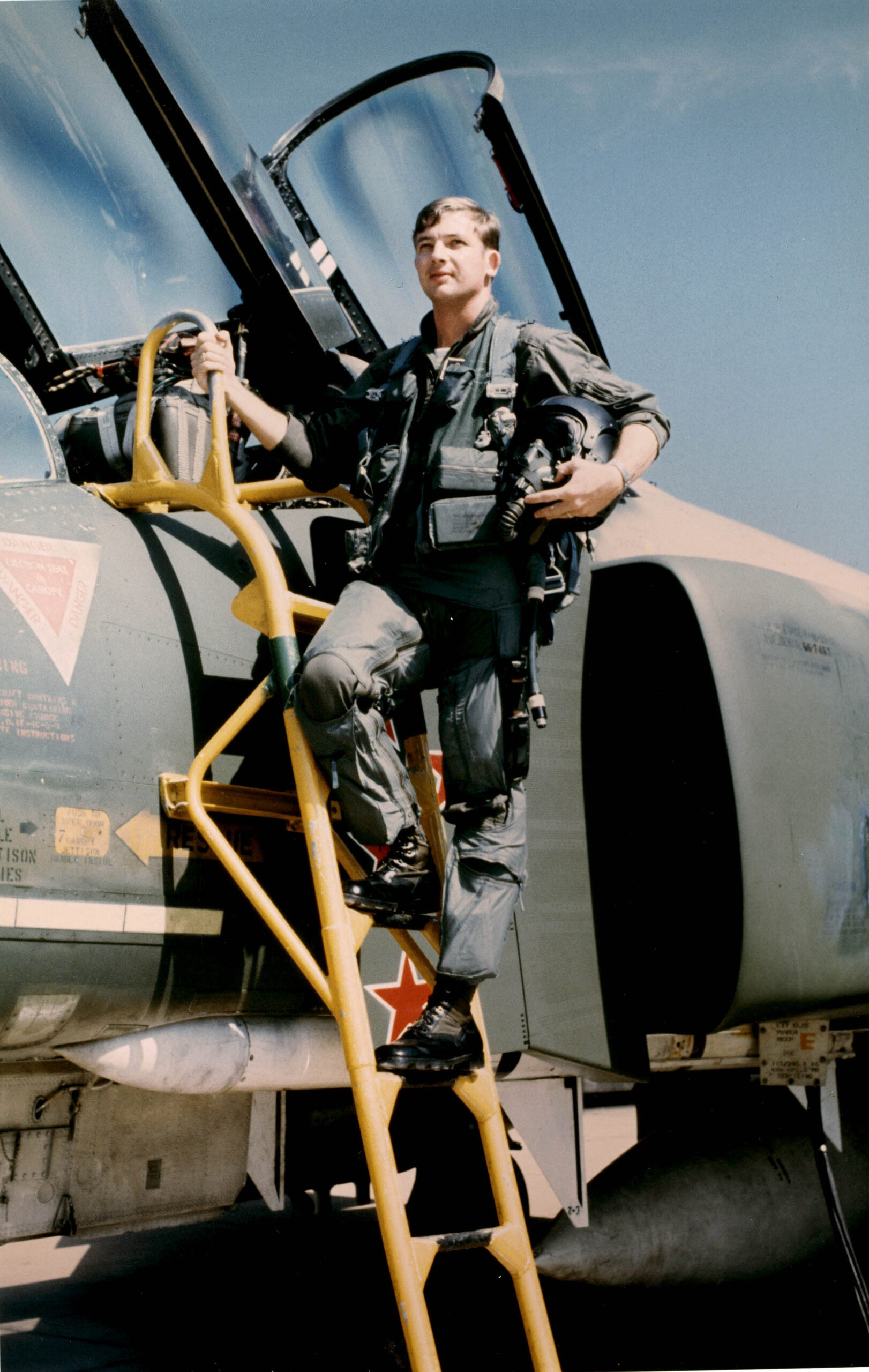
Retired U.S. Air Force Col. Charles “Chuck” DeBellevue, now living in Edmond, is the top Vietnam War fighter ace, with six MiG kills, from the last American aerial combat era to produce aces.
“The U.S. Air Force credited us Weapons System Officers (WSOs) with equal credit for MiG kills in Vietnam because we were essential in the F-4 Phantom II weapons and sensor team with the pilot and the other fighters in our flights,” DeBellevue said in an interview. “The aircraft was designed around advanced radar and air-to-air missiles, and as the WSO in the back seat, my vigilance was critical to the team for operating this complex system to shoot down MiGs.”
The McDonnell Douglas F-4 Phantom II fighter, a high-altitude interceptor, was developed with the assumption that long-range, radar-guided missiles would render classic dogfighting obsolete. The supersonic fighter relied entirely on its missile armament and fire-control radar system to engage targets. This system was far too complex for a single pilot to manage while also flying the aircraft in combat, especially while maintaining mission communications and navigation duties.
The WSO was responsible for operating the aircraft’s powerful radar, tracking enemy aircraft, to help direct the pilot, while also managing targeting and the use of weapons. The WSO managed the firing of the F-4’s sophisticated AIM-7 Sparrow and AIM-9 Sidewinder air-to-air missiles.
“My role in shooting down North Vietnamese Mikoyan-Gurevich MiG-19s and MiG-21s was to assess situational awareness of the whole tactical battlefield in the sky,” DeBellevue said. “This included what was being fired at us from the ground to shoot us down. We fought in the most heavily defended airspace in the world, except around Moscow during the Vietnam War. Whenever we flew close to Hanoi, we became the target, not the MiGs we were engaging.”
WSOs were also trained in ground attack, reconnaissance, electronic warfare, and forward air control.
Although not designed for extensive monitoring of ground threats, the F-4 proved to be a special aircraft in missions to shoot down MiGs because it used the top-secret Combat Tree system, installed on a select few F-4s. This equipment played a pivotal role in their missions as air crews gained a decisive advantage over Vietnamese Air Force MiGs.
Combat Tree was a modified Identification Friend or Foe (IFF) interrogator. The Vietnamese used Soviet-made SRO-2 IFF transponders on their MiGs. The enemy ground-controlled interception stations and Surface-to-Air missile (SAMs) sites used the transponder signal to distinguish friendly aircraft from US attackers.
“We used the Combat Tree our technical geniuses came up with to gain the tactical advantage. By ‘interrogating’ the enemy’s IFF system, we could receive a signal from the MiG’s transponder,” DeBellevue said. “This gave the F-4 crew a positive, long-range identification of a MiG, even in the ‘look-down’ clutter of my normal radar screen.”
The Combat Tree employed a passive detection method, unlike a normal radar “lock,” allowing it to passively detect and target MiGs from beyond visual range without alerting the enemy. This allowed the American F-4 crews to maneuver into an optimal position for an ambush.
On May 10, 1972, DeBellevue, flying with pilot Captain Steve Ritchie on a MiG Combat Air Patrol (MiGCAP), was vectored by command and control aircraft toward a flight of MiG-21s. Combat Tree allowed DeBellevue to identify and track one of the MiG-21s from beyond visual range.
With the Combat Tree providing a confirmed, long-range target, Ritchie strategically maneuvered their F-4 into an optimal firing position. DeBellevue launched two AIM-7 Sparrow missiles, scoring their first kill. This strategic thinking and quick decision-making in the heat of battle, amidst the intense pressure, are what made the air crew successful.
On July 8, 1972, while Captain Ritchie was flying a MiG sweep in an F-4E, they were alerted to two MiG-21s.
The men tracked the lead MiG and then quickly confirmed the second, trailing MiG, which was a known tactic for ambushing American fighters.
Ritchie to set up a reversal maneuver without the MiGs detecting them. DeBellevue fired two AIM-7 Sparrows at the trailing MiG, one of which hit the engine for the second kill. A quick maneuver onto the lead MiG and a final Sparrow secured the third kill, all within two minutes.
On August 28, 1972, DeBellevue and Captain Ritchie were protecting a Linebacker strike mission. When they encountered a single MiG-21 at high altitude, the crew used Combat Tree to acquire a radar lock that was head-on, giving them a critical ‘first-look’ advantage. DeBellevue fired four AIM-7 missiles, with the fourth finally impacting the MiG.
DeBellevue’s last two kills, making him an ace and the highest scoring ace of the war, took place on September 9, 1972. Ace is defined as having five or more confirmed aerial victories. Flying with his new pilot, Captain John Madden, on a MiGCAP flight near Phuc Yen Air Base in North Vietnam, they were engaged by two MiG-19s.
“The strength of our partnership and the teamwork between us, our mutual reliance on each other, was evident in this final mission,” DeBellevue said.
Supplying his pilot with Combat Tree data, Madden was able to perform a “slicing, low-speed yo-yo” maneuver to get behind the first MiG-19. DeBellevue then guided a heat-seeking AIM-9 Sidewinder to detonate near the first MiG. A quick switch to the second MiG allowed them to launch another AIM-9, which hit that aircraft’s tail. The two kills were scored within minutes of each other.
“All of this dogfight action is what the public wants to hear about. But first, we had to survive the battlefield below us to hunt and kill MiGs,” DeBellevue said.
The F-4 Phantom II WSOs faced a sophisticated and dense integrated air defense system primarily supplied and developed by the Soviet Union. The WSO used the F-4’s electronics to detect and counter these threats.
This threat included SAMs, radar-guided, high-altitude missiles that could reach up to 90,000 feet. WSOs were responsible for operating electronic countermeasures to give the pilot crucial information about the missile’s launch and flight path. By acting on this info to make evasive maneuvers, they countered the SAM threat.
Another ground-based missile threat WSOs monitored was SA-7 “Grail” (Strela-2), a shoulder-fired, heat-seeking missile. The WSO would often be the first to spot the launch smoke trail or receive electronic warnings. He then directed the pilot to deploy flares to confuse the missile’s heat seeker, thereby increasing the aircraft’s chances of survival.
North Vietnamese Anti-Aircraft Artillery’s (AAA) multi-layered threat was responsible for more American aircraft losses than any other enemy weapon system. The enemy employed a wide range of Soviet and Chinese-supplied anti-aircraft guns, from heavy machine guns to giant cannons.
The WSOs employed countermeasures for all this battlefield danger. In addition to using Electronic Countermeasures pods to jam larger radar-guided guns, the WSO would monitor and call out AAA activity based on visual cues and radar indications. This allowed the pilot to adjust flight paths and perform evasive actions to mitigate the risk of being hit.
Observing outside the cockpit while also focused on their electronic warfare responsibilities, the WSO focused on the broader threat beyond just the immediate visual field. This vigilance was crucial for the survival of both crew members.
“It was my job to keep us alive by constantly scanning for enemy threats on the ground and other planes approaching while the pilot flew the aircraft,” DeBellevue said. “This experience, while I worked with two different pilots during my time above Hanoi and North Vietnam, made me a new type of ace in a new kind of war.”
The F-4’s two-person pilot-WSO team revolutionized air combat by proving that a dual-crew design could effectively manage the workload of a complex, multi-role fighter. Pilot Ritchie and WSO DeBellevue of the 555th Tactical Fighter Squadron (“Triple Nickel”) were the USAF’s only aces of the Vietnam War. •
story and photos by Darl DeVault, contributing editor


